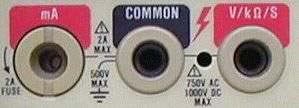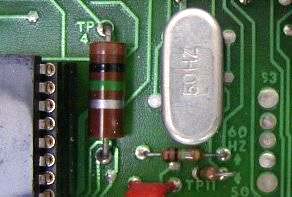Important Notes
Before I even start describing this project I would like to add two important notes:

This project requires some basic knowledge and skills when it comes to electrical safety.
It is not only dangerous to open a multi-meter while its in operation, modifying one can also be hazardous if you don't know what you're doing because of the high voltage levels that may be applied to the inputs.
So please be very careful when you intend to build a copy of this project.
I don't want to scare you off, I simply want to make sure that you understand what dangers are involved in this project.
There is a significant difference between meters intended for the 50 Hz and the 60 Hz mains frequency markets because of the common mode rejection requirements.
Meters intended for the 50 Hz mains market take 2.5 samples per second, while the 60 Hz versions take 3 samples per second.
There are even models with a switchable oscillator to accommodate both markets.
The current project is tailored for the 50 Hz market only.
Please let me know if you're interested in this project while having a 60 Hz model and I will change the software to work on 60 Hz models as well.
You can easily tell what model you have by looking at the text at the bottom of the meter. Near the end you see a line that says: "Frequency (For best common mode rejection)". Below that line are two boxes, one with 50 Hz next to it, and the other one with 60 Hz. One of them should be checked which indicates your meter's frequency.
 In the event that none of the boxes are marked you can open your meter and have a look at the big crystal that is located a few centimeters behind the LCD.
It should be marked with either 50 Hz or 60 Hz.
This is not the real crystal frequency of course, it's only an indication for what meter model the crystal was intended.
In the event that none of the boxes are marked you can open your meter and have a look at the big crystal that is located a few centimeters behind the LCD.
It should be marked with either 50 Hz or 60 Hz.
This is not the real crystal frequency of course, it's only an indication for what meter model the crystal was intended.
In this picture you see 50Hz stamped on the crystal's top, indicating that this meter is intended for the 50 Hz market.
A dual frequency model will have 2 crystals installed (rotated by 90°).
The switch on position S3 can then be used to select the appropriate frequency mode (up=60Hz, down=50Hz).
Needless to say that you should set this switch to match the mains frequency in your area for best common mode rejection.
